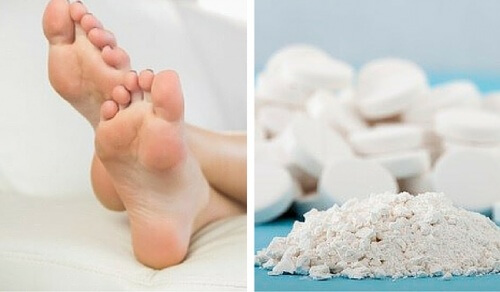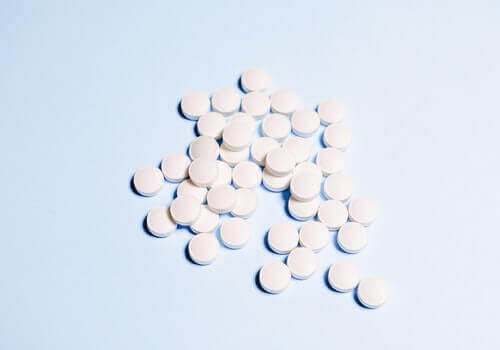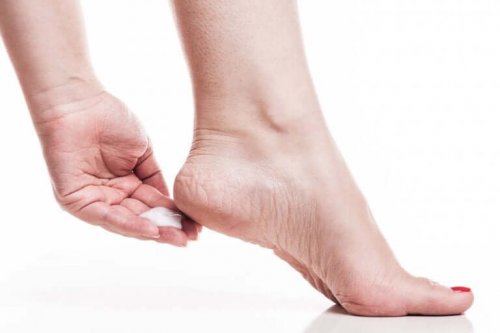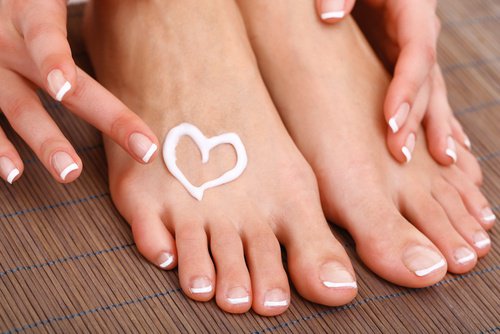How to Remove Your Foot Calluses with Aspirin


Reviewed and approved by the doctor Karla Henríquez
Today we’re going to tell you how to remove your foot calluses with aspirin. These annoying patches of rough skin happen due to an alteration of the most superficial layer of the skin that manifests with thick skin (hyperkeratosis). They’re are asymptomatic although rather unpleasant to look at and this is why people are constantly looking for good ways to remove them.
Calluses usually appear due to an increase in dead and scaly cells, which arise from pressure or continued friction caused by improper footwear or not walking properly.
So, stick around to learn how to get rid of them! All you need is a few aspirins. Read on to find out the procedure and other details!
Aspirin can remove your foot calluses
Aspirin (acetylsalicylic acid) is a medication used worldwide to treat headaches, fever, and certain circulatory diseases. As a result, it’s one of the most prescribed painkillers in the world.
It contains a fat-soluble compound called beta-hydroxy acid. Therefore, it’s used by many companies in the manufacturing of exfoliation products.

Due to this, people believe that aspirin can help remove calluses and corns on the feet. It would help soften them, as well as relieve swelling in the area, which would make it easier to remove them with a pumice stone.
Aspirins are useful for this purpose, at least according to studies. However, always keep in mind that everything can vary depending on your type of skin, and dermatological conditions (atopic dermatitis, psoriasis, acne, etc.).
Check out Onion and White Vinegar: The Best Remedy for Feet Calluses
How to use aspirin to remove your foot calluses
Some people believe the combination of the salicylic acid in aspirin and lemon juice can create a mixture capable of softening calluses and facilitating their removal.
However, there are some discrepancies around the use of lemon juice, as it can cause irritation and other discomforts to the skin. While using it, you also run the risk of darkening the skin. However, there are those who decide to use it, although in small quantities.

Ingredients
- 4 aspirins
- The juice of one lemon
- Water (approximately 0.35 ounces)
Things you’ll need
- Pumice stone
- Clean socks
Instructions
- Firstly, crush the four aspirins with a mortar and pestle. If you don’t have a mortar, you can use a fork and a heavy object
- Secondly, place the powdered aspirin in a clean glass and set it aside
- Thirdly, cut the lemon in half and squeeze the juice
- Finally, with the help of a spoon, mix the lemon juice with the powdered aspirin. Then, add a little water to form a thick paste
How to apply
- First of all, clean your feet and apply the paste to the affected areas
- Cover your feet with the socks or a towel
- Leave on for 20-30 minutes
- Rinse with warm water and mild soap
- Now, take the pumice stone and carefully scrub the affected areas to remove the corns
- Finally, dry your feet well with a clean and dry towel
- Repeat the procedure another day if you consider that you still have corns. Avoid doing it the same day or the next, as it can make the skin worse
Discover 8 Things You Can Do Everyday for Healthy Feet
Tips for best results

To keep your feet healthy and looking great, and avoid the appearance of corns, we recommend you to:
- Avoid wearing socks and tight-fitting shoes.
- Don’t use heels every day.
- Moisturize your feet with cream or lotion. You can also take advantage of this to massage your feet.
- Before going to bed, you can apply some petroleum jelly or coconut oil (or any other oil) on your feet, put on a pair of socks, and rinse your feet the following morning. This will help you avoid dryness and foot calluses.
- Deodorize the shoes you use regularly to avoid bad odors and prevent fungal and other types of infections.
- Never wear dirty socks and change them after exercising.
Go to a podiatrist in case you have any doubts about how to eliminate corns on your feet. The professional will tell you about the most appropriate treatment for your case, as well as give you some additional recommendations.
According to Dr. Kendrick Alan Whitney, people with a tendency to develop corns and calluses may consider seeing a podiatrist regularly for this condition.
All cited sources were thoroughly reviewed by our team to ensure their quality, reliability, currency, and validity. The bibliography of this article was considered reliable and of academic or scientific accuracy.
- Wei, J. S., Zeng, R., Chen, S. Y., Lin, H., Wu, S. K., & Zheng, J. C. (2014). Effects of aspirin on fracture healing in OPF rats. Asian Pacific journal of tropical medicine, 7(10), 801-805.
- Tsoucalas, G., Karamanou, M., & Androutsos, G. (2011). Travelling through time with aspirin, a healing companion.
- Burton, V. M. (1977). U.S. Patent No. 4,012,508. Washington, DC: U.S. Patent and Trademark Office.
- Langham, J. (2004). Effects of aspirin and its derivatives in combination with electroporation for drug delivery in cultured cells.
This text is provided for informational purposes only and does not replace consultation with a professional. If in doubt, consult your specialist.








